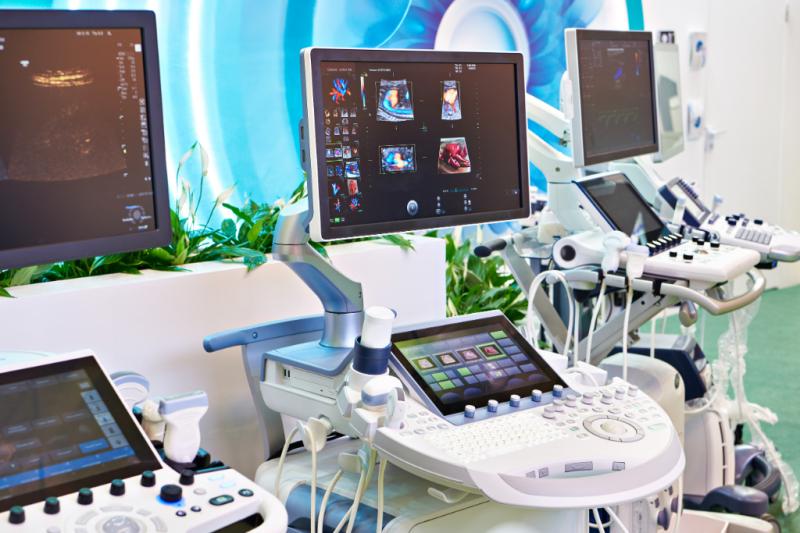How To Ensure Patient Safety During Ultrasound Procedures

Ultrasound imaging is a convenient and affordable method of detecting different conditions. It is also a safe way of producing medical imagery because it uses sound waves instead of ionizing radiation.
For more than 20 years, ultrasound has been deemed safe, even for pregnant women. Still, medical practitioners still have to observe measures and protocols to ensure patients are safe while undergoing an ultrasound procedure.
If you’re a clinician who feels that you can benefit from pursuing further education and training for this procedure, you can find out more by seeking ultrasound training courses online. Meanwhile, if you want to know how to ensure patient safety during ultrasound procedures, read below:
1. Inquire About Medications And Possible Blood Clotting
Health practitioners must inquire patients regarding every medication they are currently taking. On the side of the patient, they must exercise total honesty and inform the doctor if they also have tendencies for having blood clots. The information is important because an ultrasound requires the patient to lie still for a period of time.
During this time, blood circulation can slow down in some body parts, particularly the legs. This increases the risk of blood clotting. You might need to provide more tests and the necessary medication to help minimize the risk.
2. Use Single-Use Sterile Ultrasound Gel Packets
To ensure proper infection control at the clinic or hospital, it is standard protocol to use single-use sterile gel packets. It is advised by the Centers for Disease Control and Prevention that there must be single-use ultrasound gel packets, one for each patient during the ultrasound procedure.
The sterile gel should only be used on broken skin during an endocavitary exam or if the patient is confined to the neonatal intensive care unit. Single-use non-sterile gel packets should only be used on intact skin. This also applies to non-sterile bottles. When in use, the tip of the bottle should not come in contact with the patient’s skin to avoid cross-contamination.

3. Adequate Training Of Healthcare Providers
Fully trained individuals should only perform the ultrasound procedure and handle the ultrasound equipment. Trained staff would know how to properly set up the equipment and be mindful of its biochemical effects, mechanical- and thermal-wise. Trained personnel also understand the impact of the machine depending on the power levels.
Ultrasound imaging is used in pregnancy and diagnostics. Patients and facilities risk a lack of oversight when using point-of-care ultrasound. There have been horror stories of misdiagnosis due to improper handling and poor maintenance of ultrasound equipment. Faulty equipment can usually lead doctors to over- or under-diagnosed patients.
4. Sanitize Equipment Before Use
Aside from hospital beds and medical accessories, ultrasound equipment should also be cleaned before a patient's use. Make it a point to disinfect cables and transducers for every session. Every member of staff must use gloves and approved disinfectants for various ultrasound procedures, particularly for lung diagnostics.
Following proper hygiene protocols, such as washing and disinfecting hands, also reduces the risk of spreading viral and bacterial infections from one patient to another and vice versa. For those with confirmed cases of COVID-19, it is also safer to dedicate one piece of ultrasound equipment for them, if possible.
5. Shave Hair On Specific Areas
Some procedures use ultrasound beams that might cause skin burns. In this case, there are areas of the body that need shaving before being exposed to ultrasound. A medical practitioner will inform the patient if it’s necessary to shave stubble or fine hair. Oily skin might also cause burns, so the area should be cleaned with alcohol or disinfectant to reduce the risk.
6. Use Straps And Restraints When Necessary
In certain instances, it would be necessary to use straps and restraints on specific individuals to help them keep still while on an ultrasound procedure. The treatment will also be successful if the patient has divulged information on any medical condition that might cause discomfort amid the ultrasound.
In some cases, the patient might be unable to lie down on their abdomen if a painful sensation is present. Patients with conditions such as back arthritis, pinched nerves, and herniated discs could find it difficult to lie still. These patients will likely receive medication to minimize the discomfort they feel.
In Conclusion
Ultrasound is generally safe for patients, but risks are mostly related to inadequate training in personnel handling or performing the procedure. Any medical practitioner should have the proper education and training in ultrasound imaging and equipment handling. Patients must also follow instructions and work with their healthcare providers by sharing honest health information to make diagnostics safe and successful.
More to Read:
Previous Posts:








